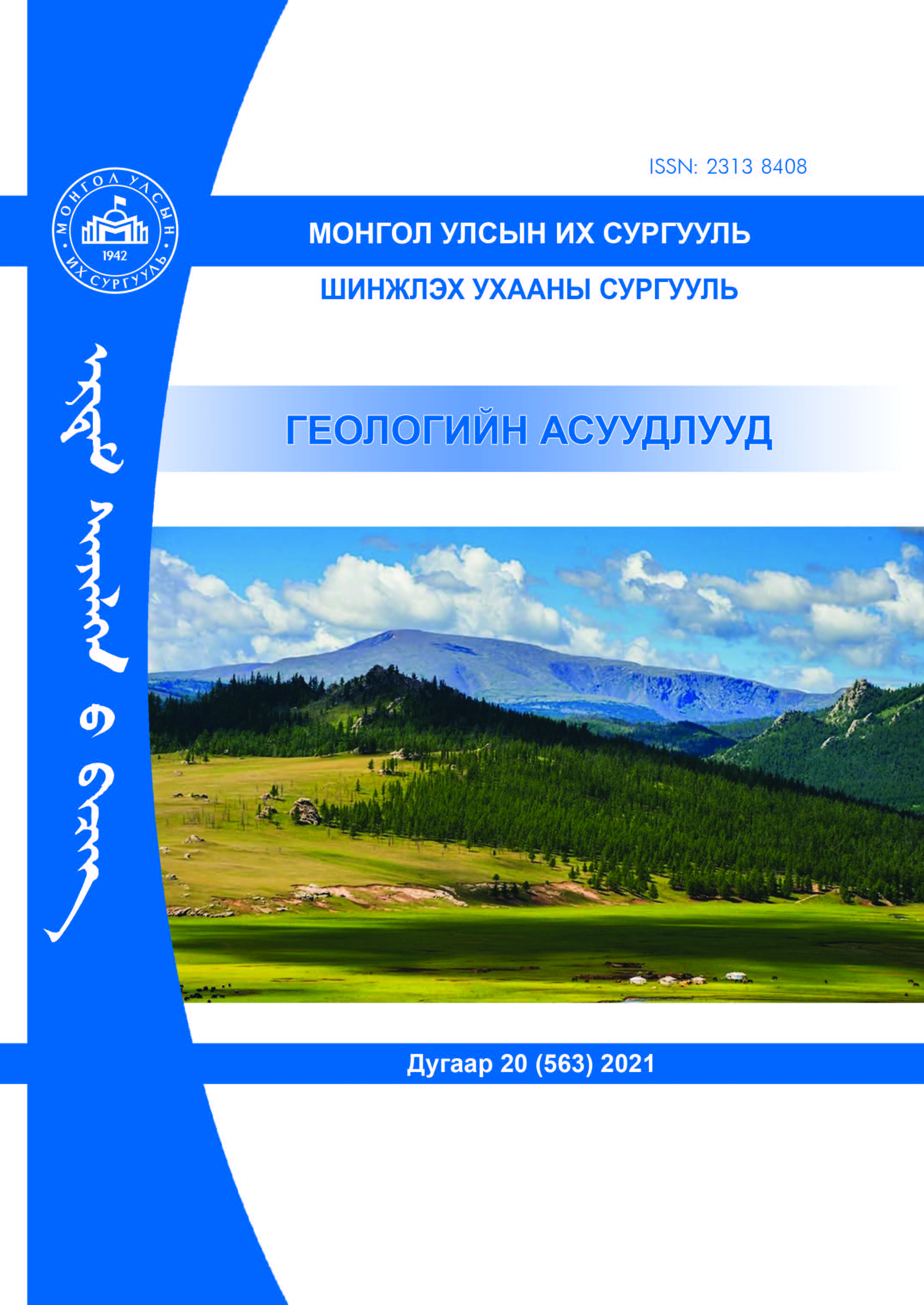ТАВТЫН ОРДЫН ФЛЮИД ОРМЫН БА ХҮХРИЙН ИЗОТОПЫН СУДАЛГААНУУД: ХҮДЭРЖИЛТ ҮҮССЭН ОРЧИН
Keywords:
Флюид ором, Хүхрийн изотоп, Тавтын орд, МонголAbstract
The Tavt ore field is located in the northern part of Mongolia. The ore field containing the Tavt deposit, which covers 90 square km, is in the Dzhida zone at the junction of two regional faults that trend NW and NE. This zone, which spans the border between Mongolia and Russia is overlapped and stitched with Orkhon-Selenge trough assemblages. The geology of the deposit consists of the Early Paleozoic Zhida intrusive complex, the Late Paleozoic Selenge intrusive complex, the Early Mesozoic Orkhon complex, the Ediacaran-Early Cambrian metavolcanic Badar River Formation, and the Early Cambrian carbonate-terrigenous Burgelt Formation. The Tavt deposit is mainly hosted in the Early Paleozoic Zhida intrusive complex. As a result of exploration, approximately 100 quartz veins, which categorize into 10 vein groups, were determined. The third vein group is the most important among 10 vein groups. These quartz veins have an average grade of 6.3 g/t Au, 29.4 g/t Ag, and 1.3% Cu. The lodes are characterized by high Au/Ag ratios and have relatively higher Cu (up to 1.3%) contents than those from other gold deposits in Mongolia. The main characteristics of the Tavt deposit are variable amounts of chalcopyrite, bornite, gold, tennantite, chalcocite, covellite, finely disseminated pyrite, galena, sphalerite, silver, hessite, copper and molybdenite, occasional argentite, pyrrhotite. The fluid inclusion analysis study shows that there are four types of fluid inclusions, vapor-liquid two-phase inclusions, vapor rich inclusions, CO2 bearing inclusions, and vapor-liquid-halite three phase inclusions. This gold deposit is composed of two stages of quartz vein groups. The homogenization temperature (Th) of the early stage of quartz vein is about 200-332℃ with 6.5 wt. % ~ 22wt. % salinity and late-stage is below 200℃. Alteration assemblages, ore minerals, and fluid inclusion and stable isotope data imply that the veins were formed under conditions of episodic fluid pressuring (125 bar), at a depth of 1.5 km, and a temperature of 3320C. The δ34S values of sulfides from Tavt deposit are from -8.6‰ to 3.6‰. This narrow range of δ34S values indicate that it is formed by hydrothermal fluid which is considered to be of granitic magma origin. △33S values of sulfide from Tavt deposit is near ‘0’. It indicates that sulfur which is related to form the Tavt deposit is not recycled from the age of Archean.
Downloads
Downloads
Published
How to Cite
Issue
Section
License
Copyright (c) 2022 Геологийн асуудлууд

This work is licensed under a Creative Commons Attribution-NonCommercial-ShareAlike 4.0 International License.


